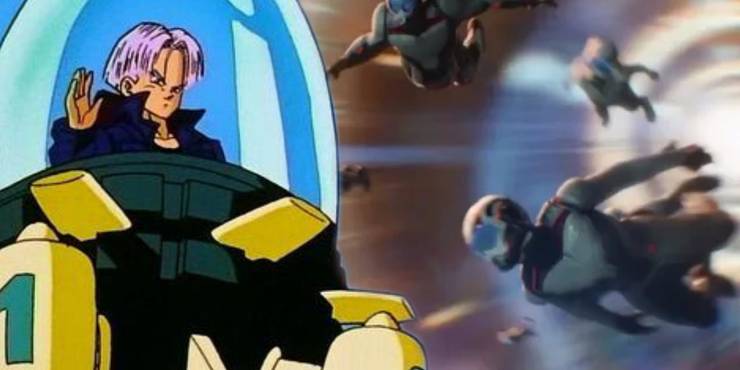Dragon Ball And The MCU Share A Similar Time Travel Problem
Dragon Ball and the Marvel Cinematic Universe both share the same time travel problem as shown in both the Trunks Saga and Avengers: Endgame!

Both Dragon Ball and the Marvel Cinematic Universe have proven that time travel is possible in their respective universes. Dragon Ball first introduced the idea when Future Trunks came back in time to the present day and teamed up with Goku and the other Z-Fighters to stop two powerful villains with the hope of saving his future. The Earth’s Mightiest Heroes of the MCU had to meddle with the sacred timeline in order to undo the devastation Thanos brought to the universe when he used the Infinity Stones to erase half of all life throughout the cosmos. While both groups were eventually successful in their missions, they both faced a similar problem, one that otherwise would have made their goals far easier to attain.
In the sixth saga of the Dragon Ball Z series, “Trunks Saga” by Akria Toriyama, Future Trunks goes back in time after his future is ravaged by Androids 17 and 18. In his travels, he saves the life of Goku, who would have otherwise died of a heart disease, and works with the Saiyan and the rest of the group including his father, Vegeta, to stop the Androids before they destroy the world as they know it. After the Z-Fighters witness the rise of Cell and Goku’s sacrifice to end his reign of terror, Trunks goes back to the future, hoping to have all the destruction he once knew undone and to see the reward of his victory. Unfortunately, the future Trunks returns to is unaltered, even after the heroic changes he helped make to the past.
In Avengers: Endgame, the astonishing finale to the Marvel Cinematic Universe's Infinity Saga, the Avengers are faced with the horrific aftermath of Thanos’ evil plan. Thanos has used the Infinity Stones to erase half of all life in the universe, then he destroys the Infinity Stones so the Avengers can’t undo what he has done. So the Avengers find an alternative way to defeat the Mad Titan, and that is to use the Quantum Realm to go back in time and snag Infinity Stones from across the timeline, bring them to their future, and use them to bring back all those Thanos destroyed.

Why couldn’t the Avengers simply go back in time before Thanos took power and stop the Mad Titan before he began his genocidal mission? And why didn’t Trunks’ future change after he defeated the Androids in the past? The answer to both explains their similar time travel problem: whatever is changed in the past does not alter their future. As the Hulk explains in Avengers: Endgame, when someone goes back in time, the past becomes that person’s future, thereby splitting the timeline and separating the one that was changed from the one from which the traveler originated.
The same rules outlined in Avengers: Endgame is proven true in Dragon Ball. Trunks is unable to change his timeline but he is successful in creating a new one, one where Goku survives his heart condition and Cell and the Androids are taken care of before they can inflict any real damage. The rules of time travel often vary from medium to medium, with a prime example of changes to the past altering the future in action coming from films such as the Terminator and Back To The Future franchises. In those films, actions taken by the time traveler in the past directly alter their future, some with even paradoxical outcomes. Regardless of how other sci-fi writers view the rules of time travel, Dragon Ball and the Marvel Cinematic Universe seem to agree that changing the past has no impact on the future, which has proven to be a major problem for both.
Comments
Post a Comment